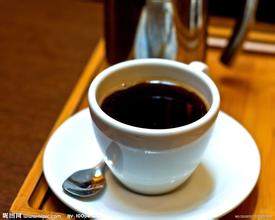Introduction to the flavor and taste characteristics of Panamanian coffee with cream and sweet aftertaste
The overall economy is at a low level of development, agriculture, forestry and fisheries account for the majority of people's livelihood, but shipping-related enterprises and part of the financial and insurance industry have international status, resulting in a small number of super-rich class, a large gap between the rich and the poor. Panama is rich in forest resources and has many tropical tree species. Mahogany, cedar, teak and other timber are abundant in the east, providing a small number of internationally competitive exports. Farmers live on tropical cash crops such as bananas, pineapples, sugar cane and coffee. The industrial foundation is weak, there is no heavy industry, and the manufacturing industry is mainly light industries such as agricultural and animal husbandry products processing industry and livelihood products industry, and some low-tech household appliances can be self-made.
Copper and gold deposits are relatively large, currently ranking the sixth largest copper country, with an output value of US $430 million in ore mining in 2013. There are theoretical reserves of oil and natural gas in the eastern rock strata, which has also become the focus of the international energy industry. for ordinary people, if they want to get out of the countryside, they can only go to the city to engage in the service industry, with a service output value of US $25.1 billion, and transportation, warehousing and tourism are major sources of job opportunities. The port of Gelang in Panama (including three terminals such as MIT, CCT and Cristobal) on the Atlantic coast and the ports of Balboa and PSA Panama in Panama on the Pacific coast rank first and second in container traffic among the major ports in Central and South America. In the first quarter of fiscal year 2014, the tonnage of the Panama Canal reached a record high of 87.7 million tons in a single quarter.
Workers with a higher level of knowledge can choose higher-end banking and insurance in the service industry. Panama is firmly in the position of a regional financial center in Central America and the Caribbean, with total assets of US $97.925 billion.
The tourism industry has made rapid progress since 2010, and the government has also stepped up tourism construction. In 2013, the World Economic Forum ranked 37th among 140 countries and regions and fourth in the Americas. The continuous investment in the hotel industry and the holding of international trade fairs have become the key support objects of the government. The Nicaraguan Canal is bound to have an impact on Panama after it is opened in the future. The government intends to invest in strengthening the capacity of business reception and financial services to meet the challenge.
In the Pokuit producing area, there are also many excellent manors, except the famous Emerald Manor, Alida Manor, Aqaba Manor and so on, all of which produce high-quality boutique coffee. This is not only due to the superior ecological conditions of the Pokuit region of Panama and the fertile volcanic ash soil of the Baru volcanic land. Another important factor is that the microclimate in the Poquet Heights of Panama is a unique and important resource for boutique coffee in the Pokuit region. This is the Panamanian environment from east to west, which allows the cold air to converge above 6500 feet through the Central Mountains, thus creating a variety of microclimates in the Pokuit region, making its temperature and rainfall very suitable for plant growth. therefore, the coffee trees grown here are in very good condition. Now there are many ways of washing, but generally speaking, the floating beans are removed after the coffee fruit is picked, and then the pulp is removed. Then soak the coffee beans in the fermentation tank, the enzymes in the water will soften the mucus attached to the endocarp of the coffee beans, and the natural yeast will decompose the sugar in the mucus, a process called fermentation. After the fermentation is completed, move the coffee beans to the sun field to dry. In the process of drying, you need to constantly turn the coffee beans to ensure the uniformity of the drying. Finally, the shell is kept in the warehouse, and some raw bean merchants place an order before shelling and bagging. The processed coffee tastes clean, emphasizing bright and lively acidity, as well as clear fruit flavor and floral aroma (flower, sweet orange, pineapple, pineapple, vanilla, lively flavor) famous producing areas of Panama, beans for many contestants.
Hartman's story, like his coffee, is legendary. Hartman Manor is located in Chilidge, Santa Clara. The founder's name is Eloise Strauss Hartman. He was born on June 20, 1891 in the Moravilla region of Austria and Hungary in what is now the Czech Republic, and died on May 25, 1970 at the age of 78. Today's Hartman Manor is a family business founded by Latip Hartman (son of Eloise) in 1940. In 1966 Latip married Dinola Sandy of Costa Rica. They have five sons, Latipa Jr., Alan, Alexander, Alice and Kelly. Each family member is responsible for the growth management, harvesting and handling of the coffee and the visit to the manor. A family estate that has grown coffee for more than 100 years is a legend in itself.

Important Notice :
前街咖啡 FrontStreet Coffee has moved to new addredd:
FrontStreet Coffee Address: 315,Donghua East Road,GuangZhou
Tel:020 38364473
- Prev

Refreshing and sweet fruit flavor Kenyan Jinchugu coffee flavor and taste characteristics of boutique coffee
The Kenyan government takes the coffee industry very seriously, where it is illegal to cut down or destroy coffee trees. Kenyan coffee buyers are world-class high-quality coffee buyers, and no other country can grow, produce and sell coffee on a continuous basis like Kenya. All coffee beans are first purchased by the Kenya Coffee Commission, where they are identified, graded, and then on a weekly basis.
- Next

Introduction to the flavor and taste of Indonesian Manning coffee with strong spice flavor
Mantenin coffee beans have large granules and hard beans, and they are prone to defects in the process of planting. After harvest, they are usually subject to strict manual selection. If the control process is not strict enough, it is easy to cause a mixture of good and bad quality. in addition, the different degree of baking will also directly affect the taste, so it has become a more controversial single product. Manning has a strong taste, with rich mellowness and rich and lively movement.
Related
- Detailed explanation of Jadeite planting Land in Panamanian Jadeite Manor introduction to the grading system of Jadeite competitive bidding, Red bid, Green bid and Rose Summer
- Story of Coffee planting in Brenka region of Costa Rica Stonehenge Manor anaerobic heavy honey treatment of flavor mouth
- What's on the barrel of Blue Mountain Coffee beans?
- Can American coffee also pull flowers? How to use hot American style to pull out a good-looking pattern?
- Can you make a cold extract with coffee beans? What is the right proportion for cold-extracted coffee formula?
- Indonesian PWN Gold Mandrine Coffee Origin Features Flavor How to Chong? Mandolin coffee is American.
- A brief introduction to the flavor characteristics of Brazilian yellow bourbon coffee beans
- What is the effect of different water quality on the flavor of cold-extracted coffee? What kind of water is best for brewing coffee?
- Why do you think of Rose Summer whenever you mention Panamanian coffee?
- Introduction to the characteristics of authentic blue mountain coffee bean producing areas? What is the CIB Coffee Authority in Jamaica?

